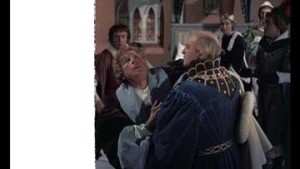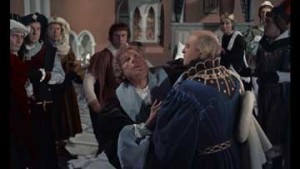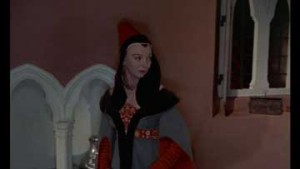![]()


The project was completed under the auspices of The Film Foundation, a non-profit organization formed in 1990 by Martin Scorsese to preserve endangered films. The group has supported the restoration of over 600 films to date. The restored Richard III will be release in April on Blu-ray by Criterion.
“We’re so pleased to have been able to support this stunning restoration thanks to the generosity of the Hollywood Foreign Press Association and with the support of our partners: Janus Films, the BFI National Archive, ITV Studios, MoMA and Romulus Films,” said Margaret Bodde, executive director of The Film Foundation. “This project was a huge undertaking and the result of this successful collaboration is the magnificent restoration of the film as it was meant to be seen.”
Richard III was restored under the direction of Sony Pictures Entertainment’s EVP of asset management, film restoration and digital mastering Grover Crisp and is the most faithful ever to the original 1955 United Kingdom theatrical release. Working from the original Vistavision negative, the film was scanned at Cineric, Inc. in New York and meticulously restored in 4K at Colorworks.
“The new restoration is similar to the version that most people are aware of from past prints or DVD releases,” Crisp said. “But those versions were compromised by the use of multi-generational elements in place of cut, or missing, original negatives.”
After exhaustive research, overseen by Tom Heitman at Cineric, approximately 100 shots of original negative that had been excised from the original cut negative were reinserted into the digital file timeline. Although 100 shots may seem like a small number, they constitute a significant portion of the film which comprises in total less than 500 shots. As a result, the restored version represents a major enhancement in image quality.


Color grading, conforming, DCP mastering and Blu-ray mastering were completed at Colorworks on a Baselight system. In the grading process, care was taken to accurately reproduce the distinctive, colorful look of the Vistavision original. “The colors are so rich you can almost feel the texture of the costumes,” Colorworks colorist Sheri Eisenberg said.
Eisenberg added, however, that achieving consistency was a challenge due to the varying condition of the source material. “Some scenes had faded yellow, others had faded green, others were not faded at all,” she said. “In the most faded scenes, the vibrancy was gone and had to be brought back to life.”
The look of Richard III was also unusual in that Olivier staged and lit it more like a theatrical play than a film. “The lighting is not intended to convey cinematic realism,” Eisenberg explained. “In the midst of a daytime scene, light may suddenly come up on an actor’s face. Grover was insistent on preserving those types of effects — and we did.”
As completion of picture restoration was going on at Colorworks, the film’s soundtrack was undergoing a similarly thorough restoration at Chace Audio by Deluxe. Sound restoration was based on 1955 master track positive and preserves the original monaural format.
Richard III is the latest in a series of classic films to undergo 4K restoration at Colorworks. Others include Lawrence of Arabia, Funny Girl, Taxi Driver and The Bridge on the River Kwai. “All of these projects are, in part, labors of love,” Eisenberg said. “The people involved in restoring these films care deeply about preserving film history. Being part of that process is very rewarding.”





